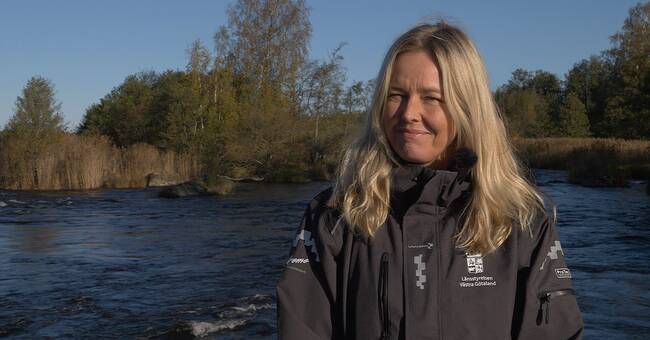Gullspång salmon is described as the world's largest freshwater salmon.
It is born in the water near the power plant in Gullspång and then migrates to Lake Vänern.
Gullspång salmon is threatened and therefore a fishing ban has been introduced around Gullspång.
But experts have now found an explanation for the decline in salmon in recent decades.
- We have received very clear results that half of the young salmon, the smolt, go via the artificial canal when the power plant is run, says Anna Hagelin, project manager at the County Administrative Board.
See more about the video of the salmon's way out into Lake Vänern and how transmitters were operated into the fish.
Implemented transmitters
With the help of small implanted transmitters, they have seen that half of the salmon do not go out into Lake Vänern the natural way via Åråsforsarna but instead turn off in an artificial canal built in the 70s, built to take care of surplus water.
If the power plant is not running, the water level in the canal will be too low.
If this happens before the salmon has reached Lake Vänern or when it is to return for reproduction, it risks not finding a home and being trapped instead.
- This is very important knowledge for Gullspångälven, but the knowledge can also be used in other places with similar solutions with diverging dams, says Anna Hagelin.
Old condition
The new knowledge will be important for all hydropower plants with similar solutions when the permits are now to be renewed for the country's hydropower plants.
Some of the permits are over a hundred years old.
Recently, new regulations came from the Swedish Maritime Administration that make salmon and trout even more protected in Lake Vänern.
From 1 October, there will be a total ban on fishing for salmon and trout in an area outside Gullspång that corresponds to as much as eight percent of Lake Vänern's area.
The ban applies to both commercial fishermen and recreational fishermen.

